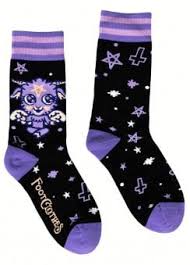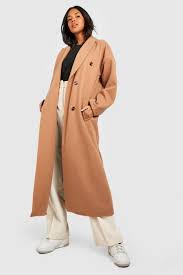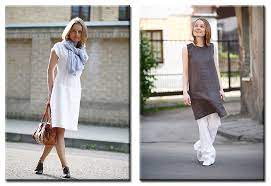The fashion market is a dynamic and ever-evolving industry that plays a significant role in our lives. Fashion not only reflects our personal style but also serves as a means of self-expression, cultural identity, and even social status. From haute couture runways to fast fashion retailers, the fashion market encompasses a wide range of styles, trends, and price points to cater to diverse consumer preferences.
One of the defining features of the fashion market is its constant state of flux. Trends come and go, styles change, and consumer demands evolve. Fashion designers and brands must stay ahead of the curve by closely monitoring global trends, understanding consumer behaviour, and predicting future demands. This requires creativity, innovation, and an ability to adapt to changing market dynamics.
In recent years, sustainability has become a key focus within the fashion market. With growing concerns about environmental impact and ethical practices, consumers are increasingly seeking out brands that align with their values. As a result, many fashion companies are embracing sustainable practices by using eco-friendly materials, implementing ethical manufacturing processes, and promoting fair trade practices.
The rise of e-commerce has also revolutionized the fashion market. Online shopping has made it easier than ever for consumers to access a wide variety of fashion products from around the world. It has opened up new opportunities for smaller brands to reach a global audience and has given rise to influencer marketing as an effective tool for promoting fashion products.
Furthermore, technology has played a significant role in shaping the way we experience fashion. Virtual reality (VR) and augmented reality (AR) have allowed consumers to virtually try on clothes before making a purchase online. Artificial intelligence (AI) is being used to personalize shopping experiences by providing tailored recommendations based on individual preferences.
The fashion market is not just limited to clothing; it encompasses accessories, footwear, beauty products, and more. It is an industry that employs millions of people worldwide across various sectors such as design, manufacturing, marketing, and retail.
In conclusion, the fashion market is a vibrant and diverse industry that continues to evolve and adapt to changing consumer demands. It is an integral part of our culture and society, influencing how we present ourselves to the world. As fashion trends come and go, one thing remains constant: fashion will always be a powerful means of self-expression and creativity.
8 Tips for Succeeding in the Fashion Market: A Guide for UK Businesses
- Research the latest fashion trends and look for ways to incorporate them into your products.
- Utilise social media platforms to promote your fashion brand and attract new customers.
- Develop relationships with influencers that can help you reach a larger audience.
- Offer discounts or promotions to encourage customers to purchase from you regularly.
- Create an online presence through a website or blog, which will help you reach more potential customers globally.
- Participate in fashion events and trade shows as a way of networking with other industry professionals and gaining exposure for your brand.
- Use high-quality images when marketing your products as this will give potential customers an idea of what they are buying before they make a purchase decision
- Stay up-to-date with the latest technology in order to provide an efficient customer service experience for shoppers online
Research the latest fashion trends and look for ways to incorporate them into your products.
In today’s fast-paced fashion market, staying on top of the latest trends is crucial for brands and designers. Researching and incorporating these trends into your products can give you a competitive edge and keep your offerings fresh and relevant.
Fashion trends are constantly evolving, influenced by various factors such as runway shows, celebrity styles, street fashion, and cultural movements. By keeping a close eye on these trends, you can identify emerging styles, colours, patterns, and silhouettes that resonate with your target audience.
To start your trend research, explore fashion magazines, blogs, social media platforms, and industry publications. These sources provide valuable insights into what’s hot in the fashion world. Pay attention to the recurring themes and elements that stand out across different platforms.
Once you have identified the latest trends, think about how you can incorporate them into your products while maintaining your brand identity. It’s important to strike a balance between following trends and staying true to your unique aesthetic. Consider how you can reinterpret popular styles in a way that aligns with your brand’s vision.
Experiment with incorporating trendy elements into different aspects of your products – from fabrics and prints to cuts and embellishments. This can be done through thoughtful design choices or collaborations with other creatives who specialize in specific trend-related areas.
Remember that trends are not one-size-fits-all; they should be adapted to suit your target market’s preferences. Analyze consumer behaviour and gather feedback to understand what resonates with them. This will help you tailor your product offerings accordingly.
By researching the latest fashion trends and finding ways to incorporate them into your products, you demonstrate an understanding of current market demands while showcasing your creativity as a brand or designer. This proactive approach keeps you relevant in an ever-evolving industry while attracting new customers who are seeking trendy yet unique pieces.
In summary, staying informed about the latest fashion trends is essential for success in the competitive fashion market. By researching these trends and finding innovative ways to incorporate them into your products, you can create offerings that are both fashionable and reflective of your brand’s identity. Keep evolving, experimenting, and delighting your customers with fresh and trend-forward designs.
In today’s digital age, social media platforms have become powerful tools for businesses to connect with their target audience and promote their brand. When it comes to the fashion market, utilizing social media platforms can be a game-changer for your brand’s visibility and customer engagement.
Social media offers a unique opportunity to showcase your fashion brand’s personality, style, and values. Platforms such as Instagram, Facebook, Twitter, and Pinterest allow you to create visually appealing content that resonates with your target audience. You can share photos of your latest collections, behind-the-scenes glimpses into your design process, style tips, and even collaborate with influencers or fashion bloggers to amplify your reach.
One of the greatest advantages of using social media for promoting your fashion brand is its ability to attract new customers. With billions of users worldwide, these platforms offer an extensive pool of potential customers who are actively seeking inspiration and new trends. By consistently posting high-quality content that aligns with your brand image and values, you can capture the attention of fashion enthusiasts who may not have been aware of your brand before.
Another benefit of social media is its interactive nature. It allows you to engage directly with your audience through comments, likes, shares, and direct messages. This two-way communication fosters a sense of community around your brand and helps build trust and loyalty among your followers. Responding promptly to customer inquiries or feedback shows that you value their opinions and are committed to providing excellent customer service.
Additionally, social media platforms offer valuable insights into consumer behavior through analytics tools. These analytics provide data on post reach, engagement rates, demographics of your followers, and more. By analyzing this data regularly, you can gain insights into what type of content resonates most with your audience and make informed decisions about future marketing strategies.
To make the most out of social media for promoting your fashion brand:
- Identify the platforms that best align with your target audience.
- Develop a consistent and visually appealing brand aesthetic.
- Create engaging content that showcases your brand’s unique style and values.
- Collaborate with influencers or fashion bloggers to expand your reach.
- Interact with your audience by responding to comments and messages promptly.
- Utilize analytics tools to track the performance of your social media efforts and make data-driven decisions.
In conclusion, social media platforms provide a powerful platform for fashion brands to promote their products, connect with their audience, and attract new customers. By utilizing these platforms effectively and consistently, you can enhance your brand’s visibility, build a loyal community, and ultimately drive growth in the competitive fashion market.
Develop relationships with influencers that can help you reach a larger audience.
In today’s digital age, developing relationships with influencers has become a valuable strategy for fashion brands looking to expand their reach and connect with a larger audience. Influencers have the power to sway consumer opinions and drive trends, making them an essential component of any successful marketing campaign.
By collaborating with influencers who align with your brand values and target audience, you can tap into their established follower base and gain exposure to a wider demographic. These individuals have cultivated a loyal following through their expertise, authenticity, and engaging content. Their recommendations hold weight and can significantly impact consumer purchasing decisions.
When selecting influencers to partner with, it is crucial to consider their relevance to your brand and the values they embody. Look for influencers whose style, aesthetic, and personality align with your fashion offerings. This ensures that their endorsement feels genuine and resonates with their audience.
Building relationships with influencers is not just about one-off collaborations; it’s about fostering long-term partnerships. Engage in meaningful conversations, support their content, and create mutually beneficial opportunities. By establishing a genuine connection, you can build trust and loyalty between your brand, the influencer, and their followers.
It’s important to note that influencer marketing is not solely about reaching a large audience but also about connecting with the right audience. Micro-influencers, who have smaller but highly engaged followings within specific niches or communities, can be just as impactful as macro-influencers with larger audiences. Consider working with micro-influencers who have a dedicated following within your target market for more targeted exposure.
When collaborating with influencers, encourage them to create authentic content that showcases your brand in an organic way. This allows their followers to see how your fashion products fit seamlessly into real-life situations or personal styles. Authenticity is key in building trust between the influencer’s audience and your brand.
In summary, developing relationships with influencers can be a powerful strategy for expanding your fashion brand’s reach. By partnering with influencers who resonate with your target audience and fostering genuine connections, you can tap into their influence and gain exposure to a larger and more engaged audience. Remember, authenticity and relevance are key to successful influencer collaborations in the fashion market.
In the competitive world of fashion, one effective strategy to attract and retain customers is by offering discounts or promotions. By providing incentives for regular purchases, fashion brands can not only boost sales but also foster customer loyalty and engagement.
Discounts and promotions create a sense of urgency and excitement among consumers. Whether it’s a limited-time sale, a buy-one-get-one-free offer, or exclusive discounts for loyal customers, these incentives can entice shoppers to make a purchase they might have been contemplating. The perception of getting a good deal often motivates customers to take action and make a purchase.
Moreover, offering discounts or promotions can help fashion brands stand out in a crowded market. With so many options available to consumers, providing attractive offers sets you apart from competitors and increases the chances of gaining new customers. It also encourages existing customers to continue shopping with you rather than exploring other alternatives.
By implementing regular promotions or loyalty programs, fashion brands can build stronger relationships with their customer base. These initiatives reward repeat purchases and show appreciation for their continued support. Customers feel valued when they receive exclusive discounts or benefits, fostering a sense of loyalty towards the brand.
It is important for fashion brands to strike a balance when offering discounts or promotions. While it can be an effective strategy, it should not become the sole focus of your marketing efforts. Over-reliance on constant sales may devalue your products in the eyes of consumers or erode profit margins. Therefore, it is crucial to carefully plan and execute discount campaigns strategically.
In conclusion, offering discounts or promotions is an effective tactic within the fashion market to encourage regular purchases from customers. By creating incentives that appeal to shoppers’ desire for value and exclusivity, fashion brands can drive sales while fostering loyalty and engagement. However, it is essential to strike a balance between promotional activities and maintaining the perceived value of your products in order to achieve long-term success in this competitive industry.
Create an online presence through a website or blog, which will help you reach more potential customers globally.
In today’s digital age, creating an online presence is crucial for success in the fashion market. With the power of the internet, you can expand your reach and connect with potential customers from around the world. One effective way to achieve this is by creating a website or blog dedicated to your fashion brand.
Having a dedicated online platform allows you to showcase your unique style, products, and brand story. It serves as a virtual storefront that is accessible 24/7, providing potential customers with a glimpse into your fashion offerings at any time. By showcasing high-quality images and detailed product descriptions, you can captivate visitors and entice them to explore further.
A well-designed website or blog also helps establish credibility and professionalism. It gives your brand a polished and cohesive online presence that resonates with potential customers. You can use this platform to share your expertise through informative blog posts about fashion trends, styling tips, or behind-the-scenes stories about your brand.
Furthermore, an online presence enables you to reach a global audience. With e-commerce integration on your website, you can offer convenient online shopping experiences for customers worldwide. This opens up new markets and opportunities for growth beyond your local customer base.
To maximize the impact of your online presence, it’s essential to optimize your website for search engines (SEO). This involves using relevant keywords in your content and ensuring that your site is user-friendly and mobile-responsive. By doing so, you increase the chances of appearing in search engine results when potential customers are looking for fashion-related products or information.
Additionally, leveraging social media platforms can further amplify the reach of your online presence. Connect with fashion enthusiasts through platforms like Instagram or Pinterest by sharing captivating visuals of your products and engaging with followers through comments and direct messages.
In conclusion, creating an online presence through a website or blog is an invaluable tool in today’s fashion market. It allows you to showcase your unique style globally while establishing credibility and connecting with potential customers. By leveraging the power of the internet, you can expand your brand’s reach and tap into new markets, ultimately driving growth and success in the fashion industry.
Participate in fashion events and trade shows as a way of networking with other industry professionals and gaining exposure for your brand.
Participating in fashion events and trade shows can be a game-changer for fashion professionals looking to network and gain exposure for their brand. These events provide a unique platform where designers, retailers, buyers, influencers, and industry experts come together to showcase their latest collections, discover new trends, and connect with like-minded individuals.
Attending fashion events and trade shows offers numerous benefits. Firstly, it allows you to network with other industry professionals who can become valuable contacts or potential collaborators. Building relationships with designers, stylists, boutique owners, and fashion journalists can open doors to exciting opportunities in the future.
Secondly, these events provide an excellent opportunity to gain exposure for your brand. By showcasing your collections or products at a trade show or participating in a runway show during a fashion event, you can attract the attention of potential customers and media outlets. The visibility gained from such exposure can significantly boost brand awareness and generate interest in your offerings.
Moreover, attending these events allows you to stay updated with the latest trends and innovations within the fashion industry. You can observe what other designers are creating, learn about emerging styles or techniques, and get inspired by the creativity on display. This knowledge can be invaluable when it comes to staying relevant and competitive in the ever-evolving world of fashion.
To make the most of these events, it’s essential to plan ahead. Research which events align with your brand’s aesthetic and target audience. Prepare your collection or products meticulously so that they make a strong impression on attendees. Engage in meaningful conversations with fellow professionals to establish connections that go beyond superficial interactions.
Remember that participating in fashion events is not just about selling your products; it’s about building relationships and fostering connections within the industry. Be open-minded, approachable, and willing to collaborate with others.
In conclusion, participating in fashion events and trade shows is an effective way to network with other industry professionals while gaining exposure for your brand. By taking advantage of these opportunities, you can expand your network, increase brand visibility, and stay at the forefront of the fashion market. So, mark your calendars and get ready to make a lasting impression in the exciting world of fashion events.
Use high-quality images when marketing your products as this will give potential customers an idea of what they are buying before they make a purchase decision
In the fast-paced world of fashion, where online shopping has become the norm, visuals play a crucial role in capturing the attention of potential customers. When it comes to marketing your fashion products, using high-quality images is an essential tip that can make a significant impact on your business.
High-quality images have the power to convey the true essence and appeal of your products. They provide potential customers with a clear idea of what they are buying, allowing them to visualize how the item will look and fit in real life. By showcasing your products through captivating visuals, you create an emotional connection with your audience and increase their trust in your brand.
When customers browse through online stores or social media platforms, they are often drawn to eye-catching images that stand out from the crowd. High-resolution photos with crisp details and vibrant colors can make a lasting impression and set your products apart from competitors.
Moreover, using high-quality images enhances the overall shopping experience for customers. It eliminates any doubts or uncertainties they may have about the product’s quality, design, or fit. Customers can examine intricate details, such as fabric textures or stitching patterns, which helps build confidence in their purchase decision.
Investing in professional photography or utilizing skilled image editing techniques is worth considering when marketing your fashion products. It ensures that your images accurately represent the true characteristics of your items and align with your brand’s aesthetic.
Additionally, it is important to optimize these high-quality images for different platforms and devices. Ensuring that they load quickly without compromising their resolution will enhance user experience across various digital channels.
In conclusion, using high-quality images when marketing your fashion products is a valuable strategy that can significantly impact customer perceptions and purchase decisions. By providing potential customers with a visual representation of what they are buying, you enhance their trust in your brand and create an engaging shopping experience. So remember: invest in visually appealing imagery to showcase the true beauty of your fashion offerings and captivate your audience.
Stay up-to-date with the latest technology in order to provide an efficient customer service experience for shoppers online
In today’s fast-paced digital world, staying up-to-date with the latest technology is crucial for fashion businesses aiming to provide an efficient customer service experience for online shoppers. With the rise of e-commerce and the increasing reliance on online platforms, fashion brands must embrace technological advancements to meet customer expectations and stay competitive in the market.
One key aspect of utilizing technology in the fashion market is optimizing the online shopping experience. From user-friendly interfaces to seamless navigation, investing in a well-designed website or mobile app can significantly enhance customer satisfaction. Incorporating features such as real-time inventory updates, personalized recommendations, and easy checkout processes can make shopping more convenient and enjoyable for customers.
Moreover, embracing emerging technologies like virtual reality (VR) and augmented reality (AR) can revolutionize how customers interact with fashion products online. By offering virtual try-on experiences or AR-powered visualizations of how an item would look in real life, brands can bridge the gap between physical shopping experiences and online purchases. This not only boosts customer engagement but also reduces returns by helping shoppers make informed decisions.
Efficient customer service is another area where technology plays a vital role in the fashion market. Implementing live chat support or AI-powered chatbots allows brands to offer instant assistance to customers, addressing their queries or concerns promptly. Additionally, utilizing data analytics tools can provide valuable insights into customer preferences, enabling brands to personalize their offerings and marketing strategies accordingly.
Furthermore, keeping pace with advancements in logistics technology is essential for providing efficient order fulfillment and delivery services. Utilizing automated inventory management systems, streamlined order processing software, and reliable shipping solutions ensures that customers receive their purchases accurately and on time.
By staying up-to-date with technology trends in the fashion market, brands can create a seamless customer service experience that sets them apart from competitors. Embracing innovative solutions not only enhances efficiency but also builds trust and loyalty among online shoppers.
In conclusion, technology has become an integral part of the fashion market, transforming the way customers shop and interact with brands online. By leveraging the latest technological advancements, fashion businesses can provide efficient customer service experiences that cater to the ever-evolving needs and expectations of online shoppers.









